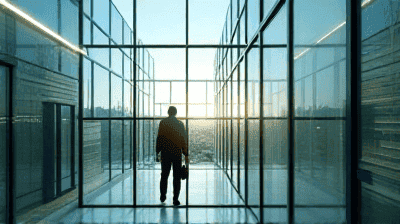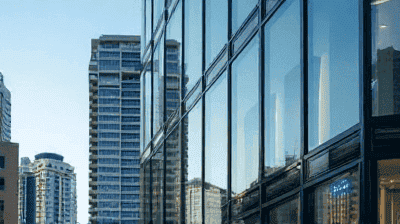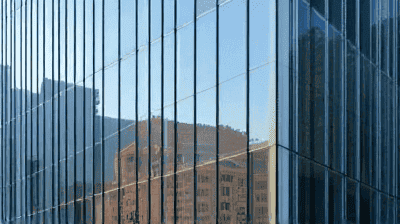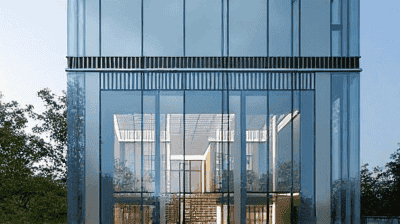
In an era where sustainable construction and energy efficiency are at the forefront of architectural design, innovative technologies are playing a pivotal role in transforming how buildings consume energy. Among these advancements, smart glass and dynamic facades stand out as groundbreaking solutions capable of significantly reducing energy use in both residential and commercial buildings.
Smart glass refers to a type of glazing that can change its properties in response to external stimuli, such as sunlight, heat, or electrical inputs. This technology allows the glass to control the amount of light and heat entering a building, ultimately improving comfort and energy efficiency.
Electrochromic Glass: This glass can change its tint when an electrical current is applied, allowing users to adjust the amount of light and heat that passes through. When tinted, it reduces glare and solar heat gain, thereby decreasing the reliance on air conditioning.
Photochromic Glass: This type of glass automatically adjusts its tint in response to sunlight. It darkens when exposed to UV rays and reverts to clear when the sun sets, providing natural regulation of light levels.
Thermochromic Glass: Similar to photochromic glass, thermochromic glass responds to temperature changes. It becomes darker as the temperature rises, helping to keep interiors cooler.
Suspended Particle Devices (SPD): SPD glass contains tiny particles suspended in a liquid. When voltage is applied, the particles align, allowing light to pass through. Without voltage, the particles scatter, blocking light.
Liquid Crystal Glass (LCG): This glass contains liquid crystals that can be controlled with an electrical signal to switch from transparent to opaque. This functionality offers privacy while maintaining daylighting.

One of the primary advantages of smart glass is its ability to enhance energy efficiency in buildings. By regulating solar heat gain and improving natural lighting, smart glass reduces the need for artificial lighting and heating, resulting in lower energy consumption.
Smart glass contributes to greater occupant comfort by minimizing glare and maintaining consistent indoor temperatures. The ability to control light levels enhances the quality of the indoor environment, creating spaces that are more pleasant and productive.
By controlling the amount of heat that enters a building, smart glass can decrease the load on heating, ventilation, and air conditioning (HVAC) systems. This reduction not only leads to energy savings but also prolongs the lifespan of HVAC equipment.
Smart glass offers a sleek, modern aesthetic that enhances the building’s facade. With various tinting options available, architects can achieve desired visual effects while still maximizing energy efficiency.
By reducing energy consumption, smart glass plays a significant role in decreasing greenhouse gas emissions associated with energy production. This makes it a valuable tool in the battle against climate change.
Dynamic facades take the concept of traditional building envelopes and enhance them with advanced technologies that adapt to changing environmental conditions. These facades can actively respond to factors such as sunlight, temperature, and wind, optimizing building performance.
Adaptive Shading Systems: These systems adjust the degree of shading based on sunlight intensity and direction. They can be automated or manually controlled to optimize daylight exposure while minimizing heat gain.
Smart Ventilation: Dynamic facades can include ventilation systems that adjust based on indoor air quality and temperature, ensuring fresh air circulation while preventing energy loss.
Kinetic Elements: Some dynamic facades feature movable components that can open or close based on environmental conditions. These elements promote natural ventilation and enhance the building’s thermal performance.
Integrated Renewable Energy Systems: Many dynamic facades incorporate solar panels or other renewable energy technologies, allowing buildings to generate their own energy while optimizing energy use.

Dynamic facades enhance a building's energy performance by managing solar heat gain and optimizing natural lighting. As a result, these facades can significantly reduce energy costs associated with heating, cooling, and lighting.
By integrating renewable energy systems and reducing reliance on non-renewable energy sources, dynamic facades contribute to overall sustainability. They help buildings achieve green certifications, which can enhance marketability.
Buildings equipped with dynamic facades can adapt to changing weather conditions, ensuring optimal performance throughout the year. This adaptability translates to improved occupant comfort and reduced energy consumption across different seasons.
Properties that incorporate cutting-edge technologies like dynamic facades are often perceived as more valuable and innovative. This can lead to higher rental or resale values.
Dynamic facades enhance the architectural appeal of buildings, contributing to a more vibrant urban landscape. Their unique designs can attract attention and interest, making a lasting impression on the community.
While the benefits of smart glass and dynamic facades are compelling, several challenges can impact their implementation:
The upfront costs of smart glass and dynamic facade systems can be higher than conventional materials. Although these investments often lead to long-term savings, the initial expense may deter some property owners.
The integration of advanced technologies requires a skilled labor force familiar with the installation and maintenance of these systems. This need for specialized expertise can complicate retrofitting projects.
Existing building codes and regulations may not account for smart glass and dynamic facade technologies, complicating approvals and permits. Collaborating with local authorities to update codes can mitigate these challenges.
To achieve optimal energy savings, ongoing monitoring and maintenance of smart systems are essential. Building owners and managers must commit to regular assessments and necessary adjustments.

Examining successful projects that incorporate smart glass and dynamic facades provides insights into their effectiveness and application in improving energy efficiency.
The Edge is often referred to as the most sustainable office building in the world. Its dynamic facade incorporates smart glass that adjusts according to sunlight and temperature, optimizing energy performance.
Energy Efficiency: The Edge utilizes a combination of solar panels and smart glass to minimize energy consumption while enhancing occupant comfort.
Occupant Experience: The office design promotes productivity and well-being through natural light and optimized climate control.
One Central Park features dynamic facades and integrated green elements that contribute to its energy efficiency.
Greenery Integration: The building’s design integrates vertical gardens, enhancing aesthetic appeal while improving air quality.
Dynamic Hydronic Systems: The facade employs dynamic systems that adjust to weather changes, contributing to energy savings and occupant comfort.
This educational facility showcases the use of smart glass technology as an integral feature of its design.
Natural Daylighting: Smart glass controls glare and optimizes light levels in classrooms, promoting a conducive learning environment.
Energy Savings: The building’s design prioritizes energy efficiency while providing a high-performance indoor environment for students and staff.
The Bosco Verticale, or "Vertical Forest," consists of residential towers that integrate dynamic facades with extensive greenery.
Microclimate Creation: The building’s design enhances the local microclimate, improving air quality and reducing energy needs.
Sustainable Living: The inclusion of smart technologies helps promote sustainability while providing residents with a unique urban living experience.
The growing emphasis on sustainability and building performance suggests that smart glass and dynamic facades will continue to gain traction in the architectural landscape. Several trends are likely to shape the future of these technologies:
As global concerns about climate change intensify, designers and builders will increasingly prioritize energy-efficient solutions like smart glass and dynamic facades. This alignment with sustainability goals will drive innovation and demand for these technologies.
Ongoing research and development will lead to more advanced smart glass and dynamic facade systems that improve performance, reduce costs, and enhance ease of integration with other building systems.
The complexity of smart technologies will necessitate more collaboration among architects, engineers, and contractors. Emphasizing interdisciplinary teamwork will maximize the potential of smart glass and dynamic facades.
As smart technologies become more prevalent in buildings, regulatory bodies will likely enact codes and standards that facilitate their broader implementation. This may include guidelines for energy performance metrics and safety standards.
The concept of smart cities will drive interest in technologies that enhance energy efficiency. Smart glass and dynamic facades will play a role in creating urban environments that prioritize sustainability and livability.
Smart glass and dynamic facades represent a transformative shift in energy-efficient building design. Their ability to respond to environmental factors and optimize energy use offers a compelling solution to the challenges of energy consumption in the built environment.
As cities continue to grow and evolve, investing in these technologies will lead to substantial gains in energy performance, occupant comfort, and sustainability. By embracing innovative solutions, architects, developers, and property managers can contribute to a greener future while increasing the value and appeal of their buildings.
The ongoing evolution of smart glass and dynamic facades is just the beginning. As they become more integrated into design practices, we can anticipate a future filled with energy-efficient buildings that harmoniously blend form and function, ultimately benefiting both occupants and the environment.